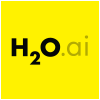Do-it-yourself artificial intelligence
Who is this presentation for?
- Developers
Prerequisite knowledge
- Familiarity with Python
What you'll learn
- Learn how to use the Google AIY Projects kits to prototype machine learning on embedded hardware
Description
Google’s AIY Projects kits bring Google’s machine learning algorithms to developers with limited experience in the field, allowing them to prototype machine learning applications and smart hardware more easily. The first Google AIY Projects kits were made available free on the cover of the MagPi, the official Raspberry Pi magazine. They proved to be so popular that the magazine sold out in a matter of hours. The original Voice Kit allowed you to prototype basic but still useful voice interfaces for machine learning applications on the Raspberry Pi.
Alasdair Allan walks you through setting up and building the kits and demonstrates how to use the kits’ Python SDK for machine learning both in the cloud and locally on a Raspberry Pi.

Alasdair Allan
Babilim Light Industries
Alasdair Allan is a director at Babilim Light Industries and a scientist, author, hacker, maker, and journalist. An expert on the internet of things and sensor systems, he’s famous for hacking hotel radios, deploying mesh networked sensors through the Moscone Center during Google I/O, and for being behind one of the first big mobile privacy scandals when, back in 2011, he revealed that Apple’s iPhone was tracking user location constantly. He’s written eight books and writes regularly for Hackster.io, Hackaday, and other outlets. A former astronomer, he also built a peer-to-peer autonomous telescope network that detected what was, at the time, the most distant object ever discovered.
Sponsorship Opportunities
For exhibition and sponsorship opportunities, email aisponsorships@oreilly.com
Partner Opportunities
For information on trade opportunities with O'Reilly conferences, email partners@oreilly.com
Contact Us
View a complete list of AI contacts
©2018, O'Reilly Media, Inc. • (800) 889-8969 or (707) 827-7019 • Monday-Friday 7:30am-5pm PT • All trademarks and registered trademarks appearing on oreilly.com are the property of their respective owners. • confreg@oreilly.com













